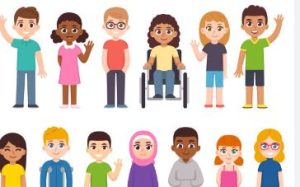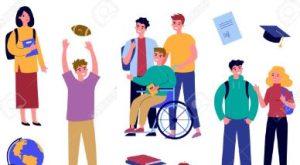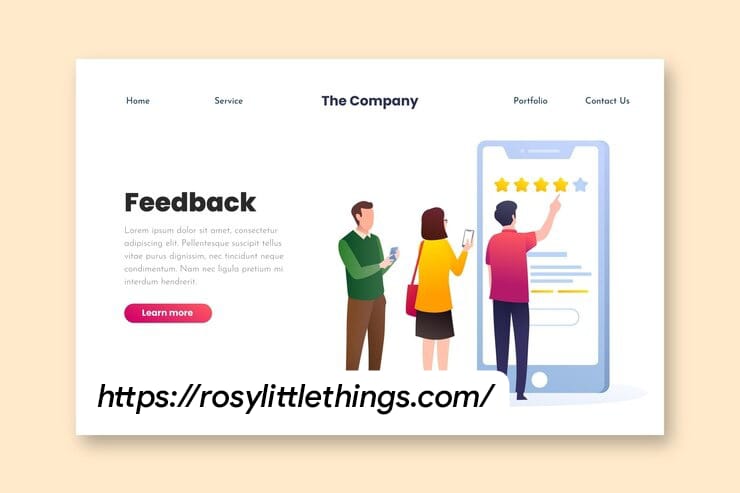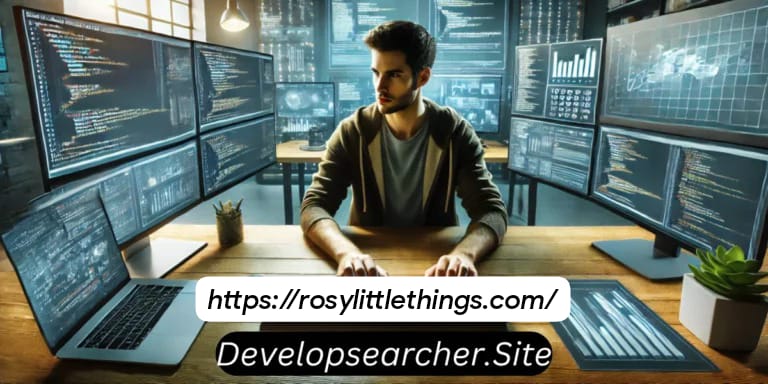
Diverse Learners
Diverse Learners: Nowadays, diversity is a fact in classrooms, and teachers are addressing the problem of creating an inclusive classroom that does not contain any discrimination either of people or their needs. From linguistic difficulties to a cultural gap, the diversity of classes’ mixes is very different, thus, traditional teaching methods will be not enough. Inclusive education means that all students are going to have equal chances to study and be equal whether they have different backgrounds or abilities. Adopting inclusive strategies helps teachers build student-centered environments that can encourage and boost success for all students.
Learning Awareness of Inclusivity in Education
Non-discriminatory education is not merely a slogan like others; it is a principle in whose concept the value and talent of every student is universally acknowledged. When schools get their meaning of inclusivity right, it not only creates a sense of belonging, and eradicates discrimination, but also contributes to the formation of a fair society. Kids knowing that they are accepted and valued, are likely to learn actively, form good self-esteem, and reach their maximum capacity.
Also, inclusive education gives valuable learning opportunities for all students. As a result of communicating with people of different cultural milieus, students become more empathetic, tolerant, and open-minded towards other people’s views. Accordingly, students’ participation in a diverse environment may contribute to their development as better-rounded individuals and make them more ready to face the intricacies of the global world.
Strategies that Cater for Diverse Learners
The diversity of needs that are required to be addressed makes it necessary to apply an all-encompassing approach that focuses on individual learners. undefined
Differentiated Instruction
- Assess and adjust the teaching methods, materials, and assessments to satisfy the different learning demands and capabilities of students.
- Apply grouping strategies that can match the learning competencies of all students in a group.
- Offer a variety of interfaces for the impairment.
Universal design for learning (UDL) recognizes the individual differences among students
- Establish instruction and learning environments that are accessible and supportive at the core of the course for all the learners in the institution.
- Utilize them in various ways like engagement, representation, and action/expression for multiple options.
- Help the persons deprived of sight using assistive technologies and digital resources to make learning more accessible.
Collaborative Teaching
- Develop collaboration among general and special teachers, experts, and support persons through engagement, teamwork, and cooperation.
- Explore the prospect of including psychologists, social workers, and other experts on the team for a more holistic service. Factors affecting the adoption of renewable energy technologies can vary across regions and market conditions.
- Introduce co-teaching formats such as one-teacher-teaches-and-one-assists, the other teaches parallel or has a station teaching.
Positive Behavior Support
- State clearly what you want and follow these regularly to make learning an environment that is stable and good.
- Design preemptive approaches, including actions that prevent as well as de-escalate undesired behaviors.
- Regardless of the age or skill level, make sure to encourage and commemorate student improvement and accomplishments.
Family and Community Involvement
- Invite parents/guardians for constant conversation and teamwork through which their assistance will be evident when problems of the students arise.
- Through effective utilization of community resources and complementary partnerships, there will be more success in community educational support and services.
- Strengthen the schools’ culture of southern share and respect for diversity.
Benefit from Technology to Deliver Inclusion
Technology plays a very important part in creating favorable conditions for inclusive teaching. Modern online school management tools including digital resources aid in varied instruction, personalized learning, independent evaluation, and collaborative teaching. Educational apps, AT as SST and multimedia resources can suit diverse learning needs and preferences.
Besides, online collaboration tools and virtual learning platforms can help teachers, students, and families work together efficiently without limiting communication, hence creating an environment of comfort.

Establishing an Inclusive and Supportive Learning Environment
Instructional strategies are not the most important part alone; the classroom that everyone belongs to and feels comfortable with should be created. Here are some tips:
Celebrate Diversity
Display the materials and educational pieces from culturally diverse backgrounds in the classrooms.
Make the curriculum inclusive by introducing different outlooks and tackling people’s diverse experiences.
Request the class members to give an account of their background and inheritance.
Foster Respectful Interactions
- Establish clear classroom protocols and rules for respectful communication and behavior.
- Model and encourage the use of inclusive language and attitudes.
- Action out the cases of discrimination or exclusion as quickly and efficiently as possible.
Promote Peer Support
- Propel collaborative learning situations through which students can work together and help each other.
- Implementing peer mentoring or buddy systems can help to build relationships and mutual relationship understanding.
- Praise students for their strengths and the fact that they are part of the classroom community.
Provide Physical Accommodations
- Make sure that the furniture and layout of the classroom are both user-friendly and versatile.
- Apply adaptive equipment and assistive technologies as required.
- Develop so doing quiet spaces or sensory-friendly areas for those students who need more support.
Professional Development and continuous support.
Providing inclusive education necessitates regular teacher training and teacher assistance for educators as well. Teachers need to be provided with the chance to have training that will ensure their knowledge and skills on topics like differentiated instruction, Universal Design for Learning, assistive technologies, and culturally sensitive teaching.
In the same vein, collaboration and school-district support systems within schools are important. Creating professional learning communities, mentoring programs, and access to specialists and support staff can assist educators in sharing evidence-based practices, pooling their resources, and continuously improving their inclusive approach.
Conclusion
Inclusive education is not just a moral imperative; it is a fundamental strategy for educating every student adequately about the trappings of life. Through the support of diversities and the application of individual assistance, educators might establish a feeling of belonging, leading to better academic outcomes and building a respectful and fair society.
Inclusive education requires a multidimensional strategy that includes diverse teaching, team learning, systematic positive behavior support, home and community participation, and appropriate use of technology. Concerned with the ongoing professional growth and support systems, educators will be empowered with the knowledge and skills they need to cater to the diverse needs of their students.
In this way, the schools will be able to implement inclusive education and build a supportive, inclusive learning environment that is for diversity, leads to empathy and shared understanding, and helps every student to achieve their goals.
What is the distinction between inclusion and mainstreaming?
Through the means of mainstreaming, students with impairments are incorporated into normal classrooms and they are sometimes provided with subjects that are not considered to be academic. Integration is the complete inclusion of students with special needs that neurotypical classrooms and states such as their peers and provides them with appropriate assistance.
As regards inclusive education, one may wonder how students who are non-disabled benefi.?
Inclusion education is a good thing for all students because it results in an integrated and well-tolerant academic society. It teaches the students to practice empathy, justice, and a tolerant attitude to other people. Moreover, traveling to different countries can heighten critical thinking, and problem-solving, as well as social skills and emotional development.
Here are important technology roles in nurturing inclusive education.
Technology can become a versatile unit in providing inclusive pedagogy. Using online school management software together with digital tools, the teachers can hold differentiated instruction, and implement personalized learning, and inclusive tests. Assistive applications comprising text-to-speech software, alternative input devices, and AAC devices may successfully meet the varying learning needs and preferences of people. Besides educational apps and multimedia resources as well as online collaboration tools can also increase students’ engagement, accessibility, and communication among teachers, families, and pupils.
What are the ways a family can be supported in a stance for the promotion of inclusive education?
One of the most important things in providing an inclusive education is family participation. Parents can be a good source of advice, and information, as well as other aspects concerning the child’s strengths, weaknesses, and preferences, which in turn can be used to develop appropriate strategies for learning and to ask for necessary services. As well, families can speak up for their child’s rights and join in the decision-making processes involving their education. Releasing communication barriers between families and educators can contribute to the formation of a more friendly and accepting environment for learning.
What are the usual challenges faced when providing inclusive education practices?
- Shortage of appropriate resources and funding for training teachers, support personnel, and assistive technology.
- Resistance of the educators, families, or community staff to any change.
- In case of lack of training and preparation for teachers that will help them to put into practice inclusive learning methods.
- Physical hindrances or inaccessible learning environments.
- In addition to the problems such as providing the correct accommodations and modifications for diverse learning needs.
Overcoming these problems calls for sustainable action, learning, and collaboration, as well as the availability of adequate resources for inclusive education initiatives.

Additional Tips and Resources
- Use illustrations, tables, and lists to improve the readability and logical presentation of the subject.
- Give examples as well as illustrate situations that are actual to present the important points and techniques.
- Insert some quotes or testimonies either from the teachers, the students, or the experts of inclusive education to strengthen the evidence of the facts and add people’s points of view.
- Provide more resources, e.g., recommended books, websites, or organizations for inclusive education to expand their knowledge.
By using these strategies of inclusive education, involving technology, building supportive classroom environments, and getting engaged in ongoing professional development, educators can create a more equitable and inclusive learning experience for all students which gives them the chance to reveal their talent and succeed.






